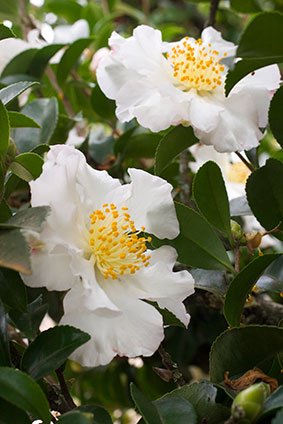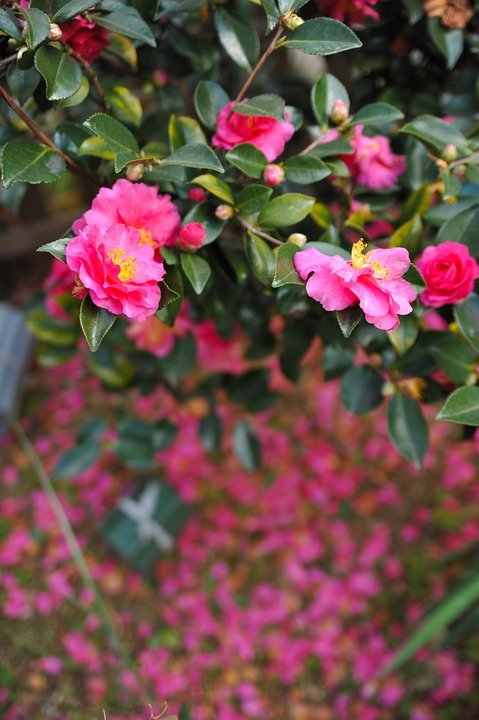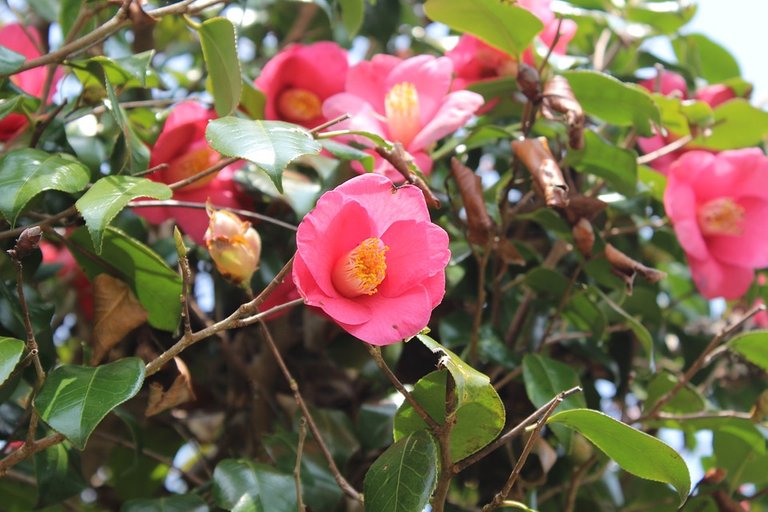Sasanqua camellia flowers earlier than the japonica types and can cope with more sunlight. They are hardy, grow easily and bloom prolifically. Camellia growers like to prune them into elegant lollipop trees. This keeps the plant in check and is perfect for smaller gardens.
The 250 species of stately, winter-blooming evergreens that make up the genus Camellia originated in the East, but there are now more than 3 000 named hybrids found around the world. This makes it almost impossible to classify each of these ornamental shrubs or trees according to their botanical names and origins without the help of a camellia expert, so when we choose them for planting it is usually according to the type of flower. The blooms are described as being either single, semi-double, double or formal double, and in the shape of an anemone, peony or double rose. The flower sizes and colours differ dramatically from hybrid to hybrid; there are variations of white, pale white, soft pink, bright pink, shocking pink, watermelon pink, light red and very deep tomato red. In addition, some blooms have bold splotches of colour and some have protruding yellow filaments. Camellias, along with many of the other ‘old fashioned’ shrubs, have fallen out of favour somewhat, probably because they are slightly harder to propagate and take several years before they become marketable. Out of season and without their attractive blooms, they remain unappreciated in nurseries unless someone is specifically looking for them and knows the particular hybrid she seeks by name. However, they are on our list because they are one of the hardiest of the garden shrubs, and especially suitable for very cold and ‘difficult’ climates.




pictures by PIXABaY